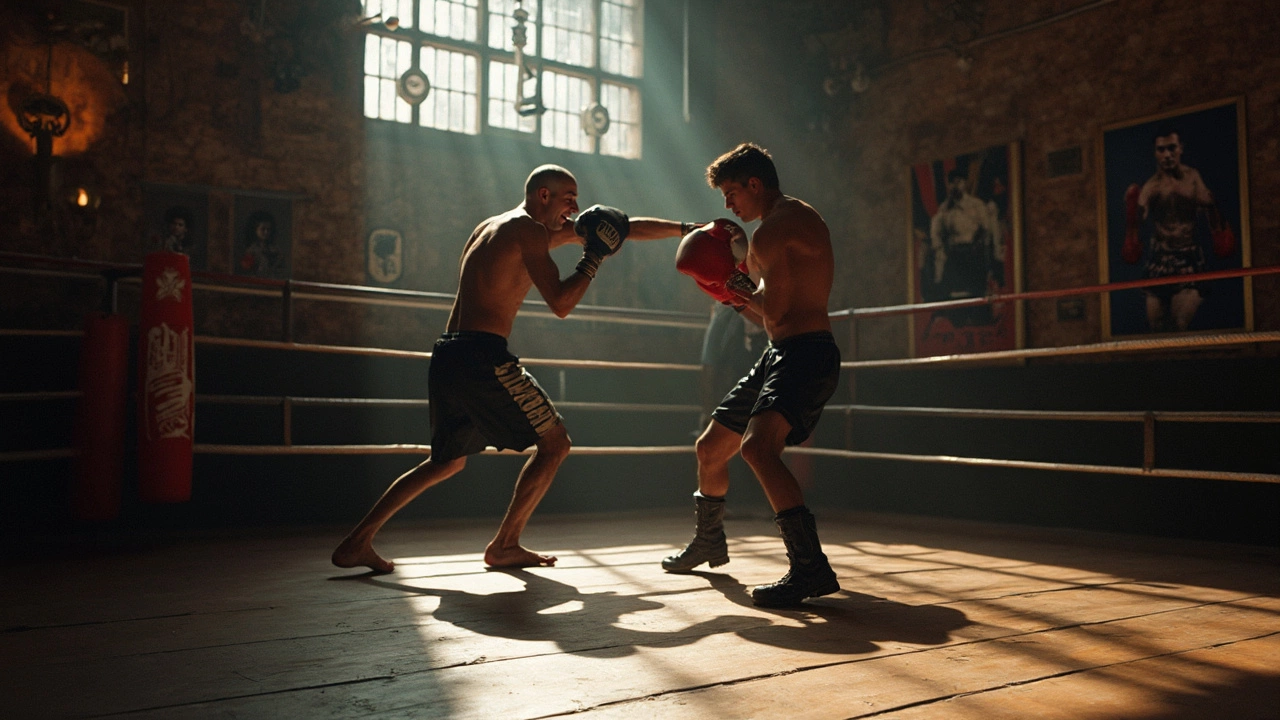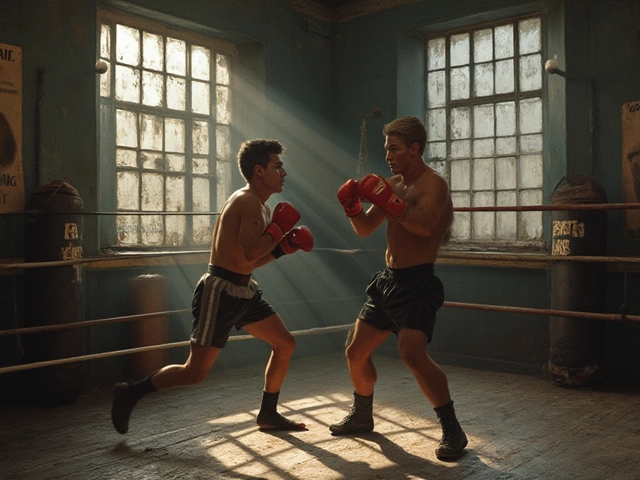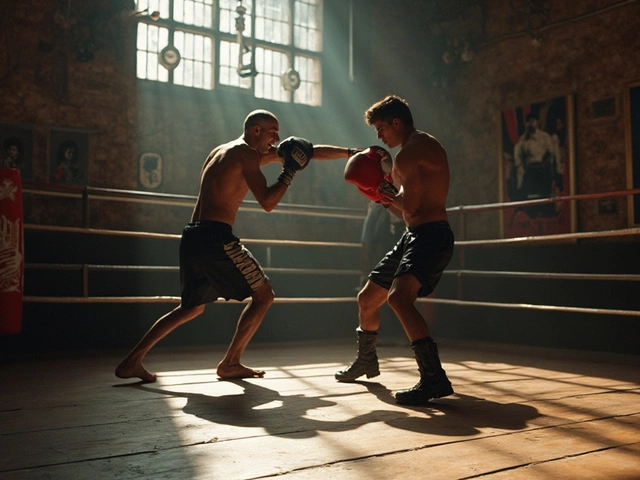Okay, so you've probably heard fighters talk about sparring. It's essentially a friendly boxing match where the goal isn't to knock your opponent out cold but to refine your skills. Think of it as the ultimate practice session for boxers. It's where they test out new techniques, improve their footwork, and build up their stamina without the pressure of an official fight looming over them.
Now, sparring isn't just about throwing punches willy-nilly. There's an art to it, a sort of unspoken etiquette. Sure, you're still gonna get punched in the face, but the idea is to help each other get better rather than hospitalize each other. Different gyms might have slightly different rules, but the general vibe remains respectful and constructive.
One of the cool bits about sparring is the benefits it brings. For starters, it's a stellar way to work on your defensive moves and reaction times. Plus, it builds mental toughness. You're in an environment where mistakes don't cost you a title; they teach you a lesson. And yeah, let's not forget the fitness side of things—sparring sessions can be incredibly intense workouts.
- What Exactly Is Sparring?
- Benefits of Sparring
- Rules and Etiquette in Sparring
- Tips for Effective Sparring
What Exactly Is Sparring?
Sparring is basically the friendly boxing match that every budding boxer needs in their corner. Unlike official fights where every move is recorded on a stat sheet, a friendly boxing match or sparring session is about perfecting the art without the pressure of a win-loss record. It’s the grinder where boxers refine techniques and develop instincts.
In its simplest form, sparring is supervised practice fighting. It mimics real bouts but with protective gear like headgear and bigger gloves to lessen impact. This balance of simulation and safety helps boxers practice in a more realistic setting. The level of intensity varies. Sometimes it’s light and technical, just exchanging little taps to work on precision. Other times, it’s more energetic, ramping up the pace to feel the burn and test endurance.
"Sparring is the heart of boxing. It's not just about fighting; it's where you learn what you're truly made of," says legendary boxing trainer Freddie Roach.
Types of Sparring
There are a few flavors when it comes to sparring, designed for different aspects of a boxer's skills:
- Technical Sparring: Focuses on mastering specific techniques and strategies without the intensity. Ideal for fine-tuning moves.
- Conditioning Sparring: Mimics a real fight's pace to build endurance and improve cardiovascular fitness.
- Open Sparring: Where anything can happen. It's the closest thing to an actual fight—a chance to put everything together.
Regulations in sparring may vary by gym, but respect, learning, and controlled aggression are universal. Remember, sparring is your chance to experiment, learn, and grow as a boxer without the stakes of a competitive bout.
Benefits of Sparring
So, what's the big deal about sparring? Well, it's not just repetitive punching practice. It's where real development happens outside of formal competition.
Improved Technique
Sparring lets fighters try out new moves and techniques in a practical setting. Rather than drilling the same combos on a bag, you're testing them against a moving, thinking opponent. It sharpens your timing, precision, and adaptability, all crucial for any boxing training.
Mental Toughness
Ever heard the phrase 'get comfortable being uncomfortable'? Sparring embodies that. It's unpredictable—you're reacting in real-time, which builds resilience. You're likely to face situations where a split-second decision can either work in your favor or become a valuable lesson learned.
Physical Fitness
Sparring is a major calorie burner. It's a high-intensity workout that boosts your cardio, builds endurance, and tones muscles. Those three-minute rounds might not sound like much, but they push your body to the limits, mimicking the experience of an actual fight.
Strategy and Flexibility
Boxing isn't just physical—it's strategic. Sparring develops your fight strategy, helping you understand when to attack, when to defend, and how to read your opponent. It's a prime chance to tweak strategies that you can't adjust in the heat of a real match.
| Benefit | Result |
|---|---|
| Technique Improvement | Better timing and precision |
| Mental Toughness | Increased resilience |
| Physical Fitness | Enhanced endurance |
| Strategy and Flexibility | Improved strategic thinking |
Overall, sparring is a cornerstone of any boxer's journey. It's where mistakes turn into mastery without the stakes of a real match. It's transformative, and every fighter knows it's where champions are truly made.

Rules and Etiquette in Sparring
So you're ready to step into the ring for some sparring? Awesome, but before you jump in, let's talk about the rules and etiquette. It's crucial to keep the session safe and productive, after all. Sparring is all about improvement, not destruction.
Basic Rules
- Use protective gear: This is non-negotiable. Headgear, mouthguards, and gloves are a must-have. These don't just protect you but your sparring partner too.
- Communicate intensity: Always chat with your partner beforehand about how intense the session should be. Light, medium, or hard—make sure you're both on the same page.
- No headhunting: In friendly matches, avoid going for knockouts. It's about honing your skills, not flaunting them at your partner's expense.
- Listen to your coach: If your coach sees something off or calls for a break, respect their judgment. They're there to keep things constructive and safe.
Sparring Etiquette
- Respect energy levels: Not every day is a good day. If your partner's dragging, don't take advantage. Adjust your pace and level of aggressiveness.
- Focus on technique: It's tempting to show off your power, but solid boxing training lies in perfecting your form, footwork, and strategy.
- Be open to feedback: After the session, discuss what worked and what didn't. Input from your partner can be gold for your growth.
- Apologize if needed: If you accidentally go too hard, own it and apologize. Maintaining goodwill is crucial in friendly boxing matches.
When it comes to sparring, think of it like a dance—both partners have to move in sync for things to flow smoothly. Remember, every legendary boxer was once a sparring newbie. The respect and dedication you show here will lay the foundation for who you become in the ring.
Tips for Effective Sparring
Alright, if you're diving into sparring, there are a few golden nuggets you should keep in mind to make it worthwhile. The idea is to come out of it a better fighter, not just a tired one.
The Right Mindset
First off, approach sparring as a learning experience. It's not about who wins. You're there to test and refine your skills. Walk into that ring like a student eager to absorb lessons.
Communication is Key
Always have a quick chat with your partner before you start. Discuss the intensity level and any specific techniques you want to focus on. It ensures you're both on the same page and avoids unnecessary conflict.
Focus on Technique
During sparring, prioritize your form over power. Practicing techniques and maintaining good posture will help you more in the long run than just trying to land hard punches.
- Keep your guard up at all times.
- Practice head movement and footwork.
- Work on your jab—it's super underrated but incredibly effective.
Control Your Power
One of the most crucial aspects of a friendly boxing match is controlling your power. You're there to help each other improve, not to knock your partner's head off. Light-to-moderate contact is usually the norm unless specified.
Know When to Take a Break
Listen to your body. If you’re feeling exhausted or a bit dizzy, it’s okay to call a time-out. It’s essential to maintain your energy and stay sharp, so you get the most out of your training.
Post-Sparring Review
Once you're out of the ring, talk to your partner or coach about what went well and what could be better. Getting feedback is a gift—it’s where the real improvement happens.
Ultimately, sparring is a critical part of your boxing growth journey. By following these tips, you’re more likely to get the most out of every session and step into actual matches feeling ready and raring to go.







